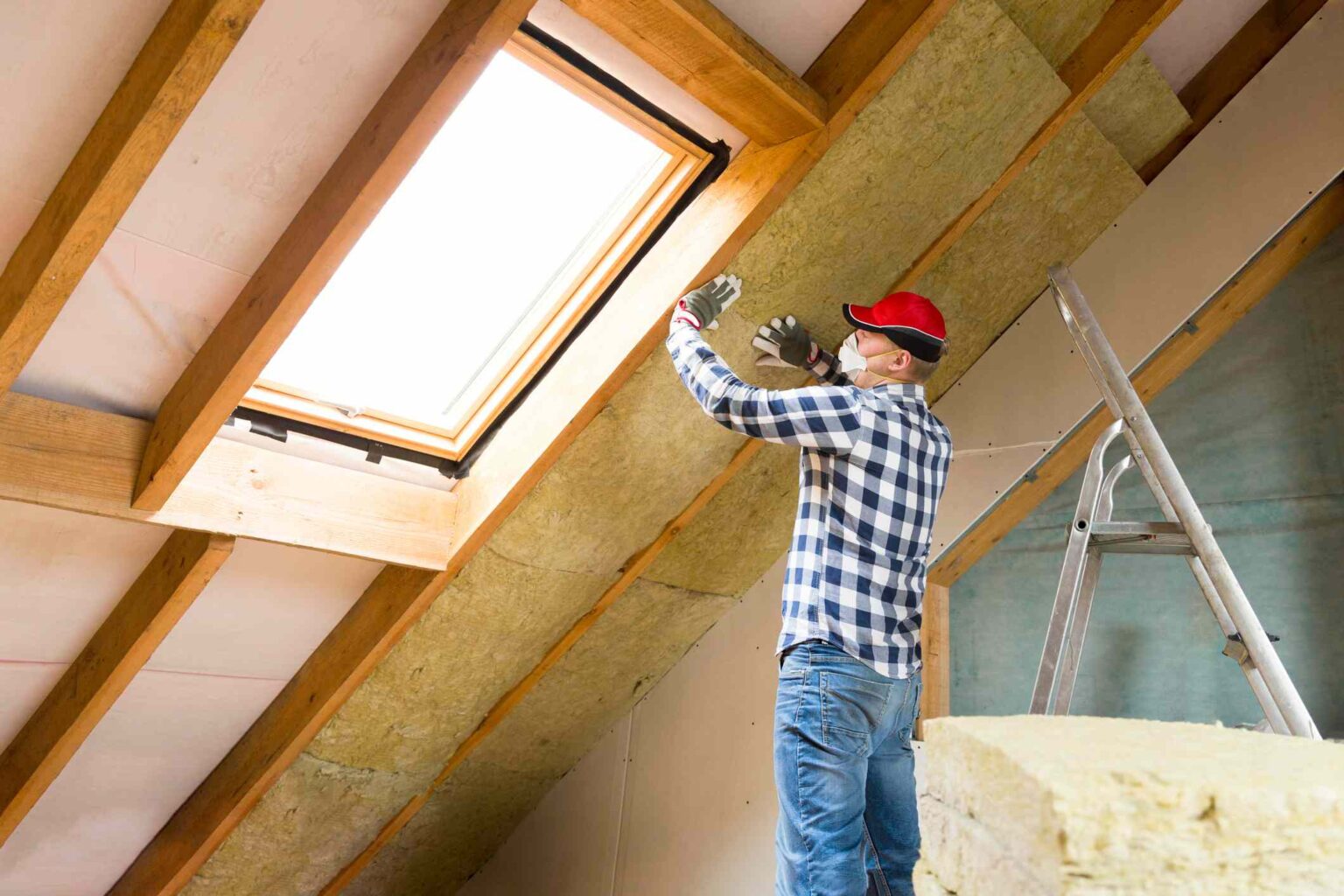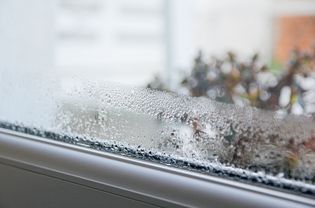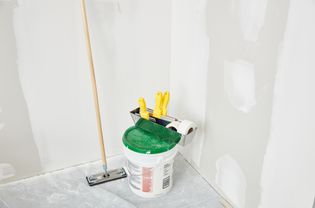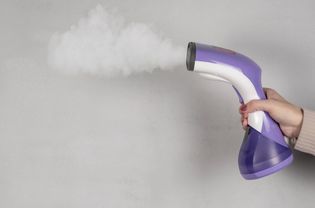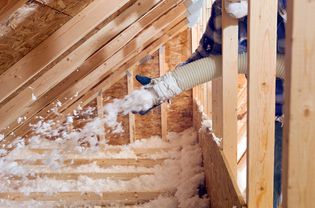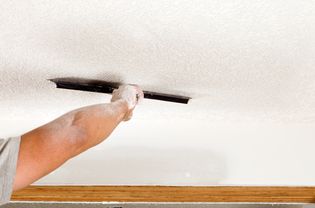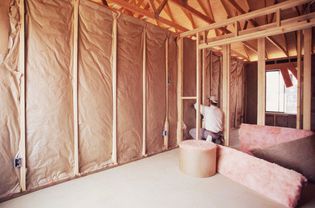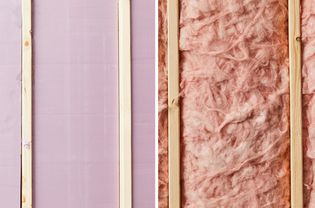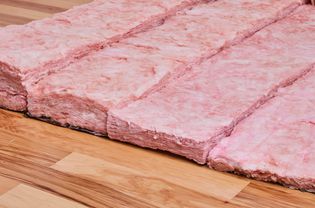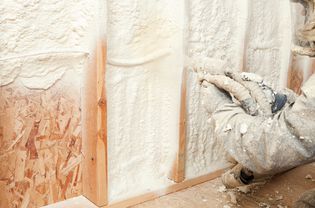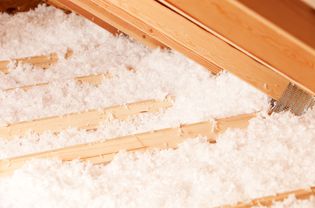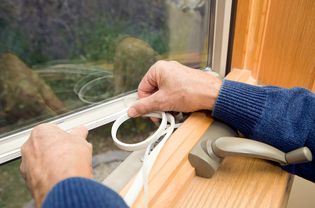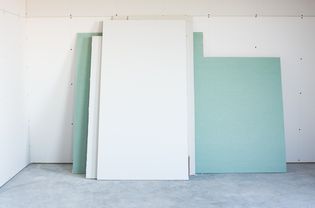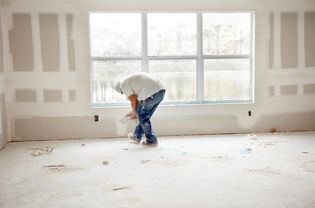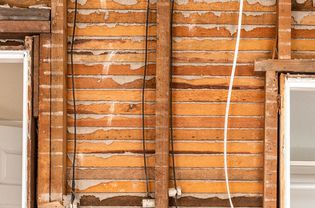Act as an expert content writer specialized in Interior Walls and Ceilings design, who speaks and writes fluently in French. Translate the article below into French. Continue writing until you finish translating the entire content from beginning to the end. Make sure the translation is linguistically accurate, and conveying the meaning, facts and figures of the original text. Make sure the content generated is well written and does not sound like a translation and reflects an awareness of the culture of French people. Don’t talk about Yourself or Your Experience. Don’t Self-reference. Don’t explain what you are doing. Write the content in HTML format and Keep the images and the structure of the article as they originally are. The article to translate:
Attic walls and roof need to be insulated to reduce the transfer of heat between indoors and outdoors. On average, installing new attic insulation will cost about $2,500, though depending on the size of the attic, the type of insulation, and other key cost factors, the price could range from $1,500 to $3,500.
Learn more about these important cost factors in order to find out how much attic insulation costs.
Meet the Expert
Tyler Tranni is the owner and operator of Tranni Home Remodeling, and has dedicated his career to turning houses into dream homes.
Attic Insulation Cost Factors
Attic Size
Small attics may only cost $500 to insulate, while large attic projects can cost more than $5,000, depending on the type of insulation, amount of insulation, and local labor costs. Generally, insulating an attic will cost about $1.00 to $4.50 per square foot installed.
« Insulation installation costs really depend on the attic size, type of insulation used, and any issues needing repair, » says Tyler Tranni, Owner and Remodeling Expert at Tranni Home Remodeling. « The bulk of the cost will be high-quality insulation materials, typically fiberglass, cellulose, or spray foam. »
| Attic Size (Sq. Ft.) | Average Cost |
| 500 | $500 to $2,250 |
| 1,000 | $1,000 to $4,500 |
| 1,200 | $1,200 to $5,400 |
| 1,500 | $1,500 to $6,750 |
| 2,000 | $2,000 to $9,000 |
Want more home reno project tips and inspiration? Sign up for our free daily newsletter for the latest how-tos, reno guides, and more!
Amount of Insulation
In some cases, the existing insulation is still in good enough condition that it can be reused, so the installers only need to add to the existing insulation to increase the R-value, which leads to a lower overall cost. But if all existing insulation needs to be removed and replaced, the cost will be much higher.
Similarly, the amount of insulation can be determined by the climate. R-value or the thermal reduction value, refers to the extent to which the insulation blocks the transfer of heat. While warmer areas can get away with less insulation, in colder areas, the insulating layer will be required to have a higher R-value, which means more insulation and higher costs.
Labor
Calling in the pros comes with the added cost of labor, which averages about $1.50 to $3 per square foot, depending on the size of the attic, insulation type, and any additional factors that may impeded or slow down the project, like insulation removal or air sealing services.
A typical attic will have a labor cost for insulation installation ranging from $1,000 to $3,000. Labor costs vary between regions and specific companies, so consider getting price estimates from at least three reputable companies.
Additional Attic Insulation Cost Considerations
Insulation Inspection
An inspection checks the attic to determine whether it needs to have the insulation completely replaced or simply increased to properly insulate the attic.
On average, you will pay anywhere from $100 to $300 for a professional attic insulation inspection, though the cost of the inspection varies depending on the size, complexity, and accessibility of the attic. Additionally, some insulation installers may offer free attic inspections as a promotion or an introductory offer, while others may charge a fee that can then be applied to an insulation replacement job.
Insulation Removal
Depending on the type of insulation and the accessibility to the attic, you may be able to remove the existing insulation on your own, but insulation removal can be included in the cost of the new insulation installation.
Typically, homeowners will pay about $1 to $1.50 per square foot to the insulation installers remove the existing insulation. The total cost of this type of work depends on accessibility to the attic, the size of the attic, the type of insulation.
Air Sealing
Air sealing is the process of removing the existing insulation to locate and repair any potential air leaks that may be affecting the efficiency of the home.
This process can be costly, with an average price ranging from $250 to $750. However, investing in this service helps to reduce the overall cost of the home’s energy bills by preventing air leaks through the walls or roof. Sealing these gaps can also help to protect the home from insects and other pests.
Attic Insulation Cost by Type of Insulation
Batt Insulation
DIYers can make good use of batt insulation for attic insulation projects. This type of insulation is relatively inexpensive and it’s sold in easy-to-install rolls that can be cut to fit custom spaces. On average, homeowners will pay about $2 to $4 per square foot, though the price can be affected by the required R-value for the home, based on the local climate conditions.
Cellulose Installation
Cellulose insulation is a type of blown-in insulation that is installed by blowing the insulation into the attic space through a long hose, which is attached to an insulation blowing machine. If you want to DIY this project, you’ll need to rent an insulation blowing machine. Cellulose insulation is an eco-friendly option that is made out of recycled newspaper and cardboard, with an average cost of about $0.33 per square foot.
Fiberglass Insulation
Fiberglass insulation is another type of blown-in insulation that can either be installed by a skilled DIYer or a professional insulation contractor. This type of insulation is a budget-friendly option that is great for homes in warmer climates, though homes in colder climates will require thick layers of fiberglass insulation to achieve the desired effect. You can expect to pay about $0.40 per square foot in material costs for a fiberglass insulation job.
Structural Insulated Panels
Structural insulated panels (SIPs) are a good choice for a new home, though they may not be a suitable option when replacing existing insulation. SIP installation may require more extensive renovations, like removing the wood paneling, leading to higher overall costs. On average, you will need to budget about $4 to $7 per square foot for this upgrade.
Rock Wool Insulation
Another type of blown-in insulation, rock wool insulation has a thick density, comparable to sheep’s wool, and better thermal reduction value (R-value) than cellulose or fiberglass. However, the higher quality of rock wool insulation also comes at a higher price, so homeowners should expect to pay about $2.40 per square foot.
Spray Foam Insulation
Spray foam insulation is applied by spraying the condensed foam at the target surface, then allowing the foam to expand and harden. This process allows the spray foam to enter even the smallest cracks and crevices, improving the efficiency of the home. Plan to spend about $3 to $5 per square foot to insulate the attic using spray foam insulation.
When Do I Need New Attic Insulation?
Attic insulation can last for decades with proper care and regular inspection. There are several signs to watch out for that indicate it’s time for new insulation:
- Age of the insulation material. Generally, attic insulation will last between 15 to 20 years, so if the insulation is already more than a decade old, it may be time to replace it.
- High energy bills can point toward the declining efficiency of the home due to damaged or worn attic insulation.
- Excess moisture and the presence of mold or mildew also indicate the the home needs new insulation. Fix any leaks and get rid of the mold or mildew before installing new attic insulation.
- Cleanliness and condition. If the insulation is dirty and looks damaged or in poor condition, then replacing the insulation is a good idea.
Best Time of Year to Insulate the Attic
Most attic or home insulation projects will take place during the fall or later summer seasons, when many homeowners attempt to improve the efficiency of the home before the coming winter months. Planning the insulation project for spring or early summer, homeowners may be able to get the job done at a discounted rate, depending on the current supply and demand for this service.
« Homeowners should ask about available rebates and tax incentives which can significantly offset costs, » Tranni says. « They should also inquire about the R-value, thickness, and type of insulation recommended for maximum efficiency in their climate. »
Benefits of Attic Insulation
There are many reasons to ensure the attic is properly insulated, especially if the space is being used for storage or as an extra living area, such as a home office or spare bedroom. Consider the following benefits of attic insulation.
- Energy efficiency is improved and maintained by properly insulating the attic and preventing any air leaks.
- Improved air quality is possible with appropriate attic insulation that will help to keep air contaminants outside, while maintaining a comfortable temperature indoors.
- Increased home value can be a result of installing new attic insulation for the home, though the amount by which the properly value increases depends on the area. Speak to a real estate professional to determine if this applies for your home.
- Moisture control can be aided by sealing any gaps in the attic and installing new attic insulation to prevent extreme temperature changes and condensation formation.
- Soundproofing is another great benefit of attic insulation, dampening the sound between floors and from outside.
DIY vs. Professional Insulation Installation Costs
In most cases, it’s better to hire a crew of trained professionals that have both the knowledge and experience to insulate the attic effectively. Tyler Tranni, Owner and Remodeling Expert at Tranni Home Remodeling, mentions one project in which the attic « had spots of water damage and little ventilation. We added vents, sealed and repaired the attic, then installed cellulose insulation. The homeowners saved over 25% on heating/cooling costs the first year. For the best results, hire an expert. We have the experience to do the job right the first time. »
-
How much is 1,000 square feet of insulation?
The cost to insulate a home depends on the type of insulation, the local labor rates, and several additional factors. However, on average, it will cost about $1,000 to $4,500 to insulate a 1,000 square foot space.
-
What is the most cost effective type of attic insulation?
Fiberglass or cellulose insulation tend to be the most cost-effective types of attic insulation, though they don’t offer the same quality as other insulation types, like spray foam insulation or insulated structural panels.
-
How often should attic insulation be replaced?
Generally, attic insulation should be replaced about once every 15 to 20 years. However, if the insulation is regularly inspected, maintained, and seems to be in good condition, then it may be able to last for a longer period without experiencing significant changes in the home’s efficiency.




